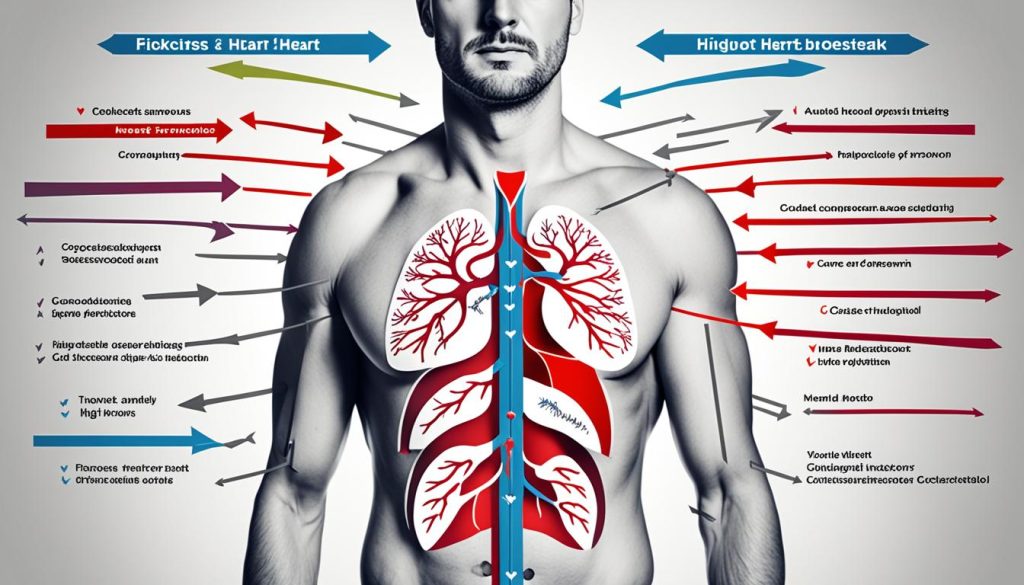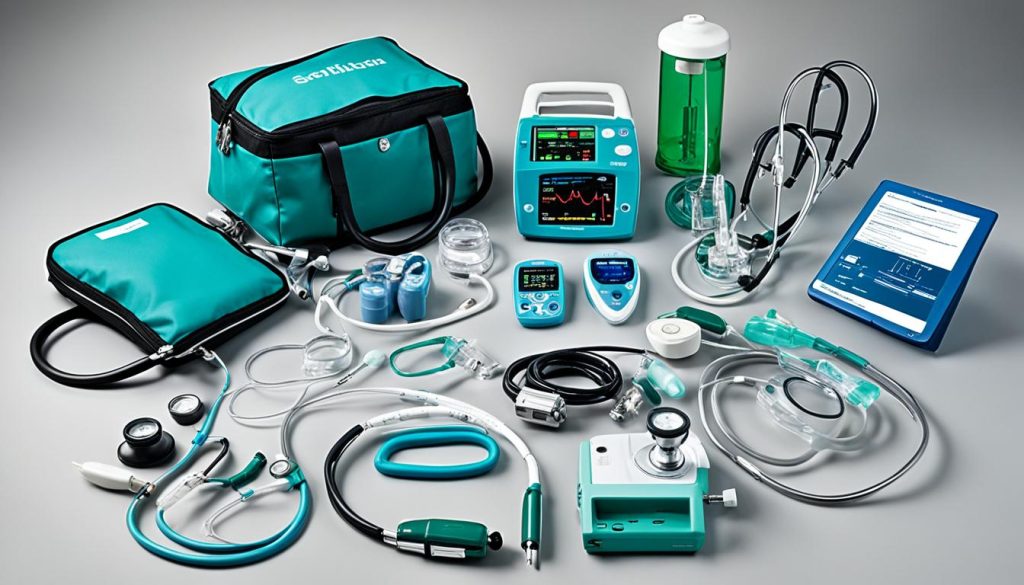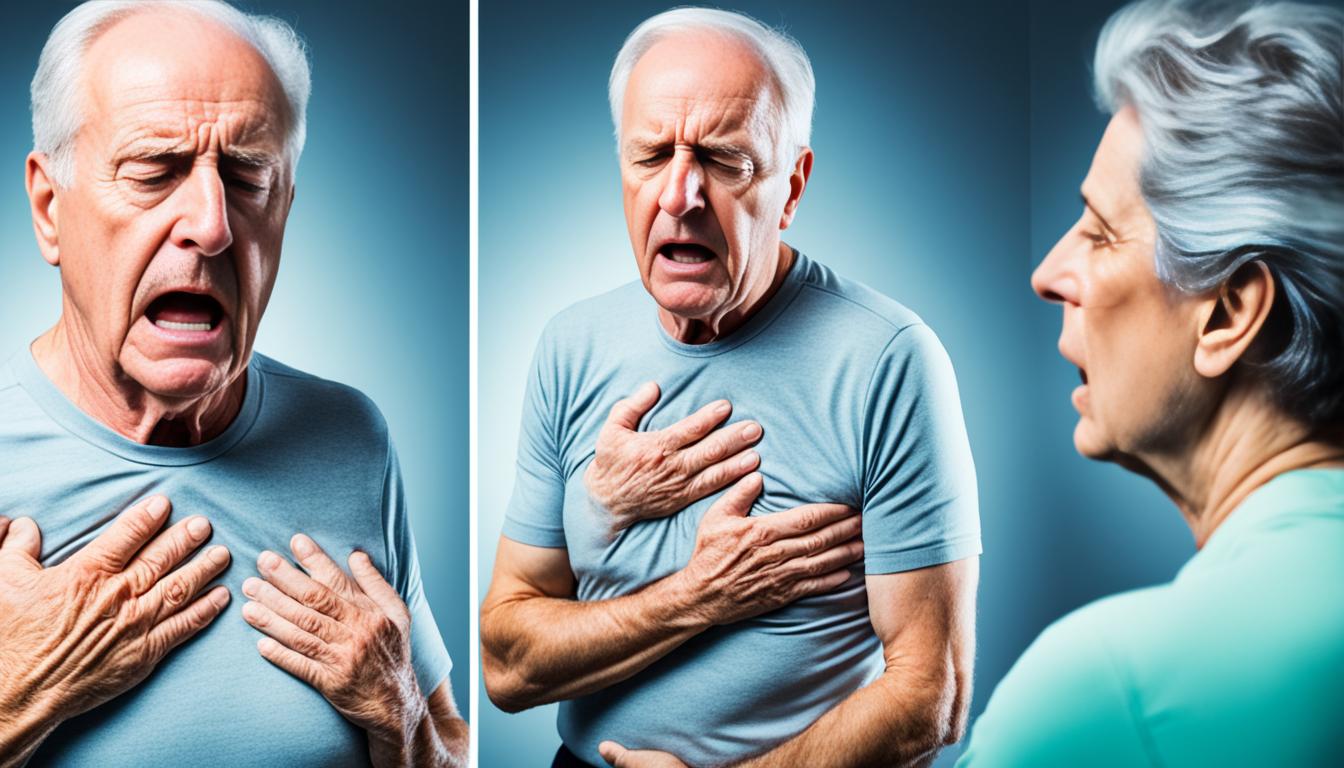A heart attack is a serious medical emergency that occurs when the flow of blood to the heart is severely reduced or blocked. It is important to be aware of the symptoms and causes of a heart attack in order to recognize it and seek immediate medical attention.
Some common symptoms of a heart attack include chest pain or pressure, pain that spreads to the shoulder, arm, back, or jaw, cold sweat, fatigue, heartburn or indigestion, lightheadedness or sudden dizziness, nausea, and shortness of breath. These symptoms can vary from person to person, and some heart attacks may even occur without any symptoms.
The major causes of heart attacks are coronary artery disease and plaque rupture leading to blood clots. However, other factors such as coronary artery spasm, certain infections, and spontaneous coronary artery dissection can also cause heart attacks.
Recognizing the signs and symptoms of a heart attack is crucial because prompt medical treatment can help reduce the risk of death and minimize damage to the heart. In the following sections, we will discuss when to see a doctor, heart attack risk factors, heart attack symptoms, treatment options, and how to recognize cardiac arrest and perform CPR.
When to See a Doctor?
If you suspect that you are having a heart attack, it is crucial to seek emergency medical help immediately. Dial 911 or your local emergency number without delay. Every second counts when it comes to heart attack treatment.
While waiting for help to arrive, follow any instructions given by your healthcare provider or emergency medical personnel. If you have been prescribed nitroglycerin or aspirin, you may be advised to take them. Nitroglycerin can help relieve chest pain, while aspirin works to prevent blood clotting and reduce the extent of heart damage.
It is important to remember not to delay seeking medical assistance in order to take aspirin. Your priority should be to reach out for help as soon as possible.
If you are witnessing someone experiencing symptoms of a heart attack, do not hesitate to call for emergency help. If you are trained in cardiopulmonary resuscitation (CPR), you should begin administering it until medical professionals arrive. Immediate intervention can greatly improve the chances of survival and minimize damage to the heart.

What to Do if You Are Having a Heart Attack?
- Call 911 or your local emergency number immediately.
- Follow any instructions given by your healthcare provider or emergency medical personnel.
- If prescribed nitroglycerin, use it as directed to relieve chest pain.
- If prescribed aspirin, take it promptly to reduce heart damage.
- Do not delay seeking medical help to take aspirin.
- If you witness someone experiencing symptoms of a heart attack, call for emergency help and perform CPR if trained.
Heart Attack Risk Factors
A heart attack can occur due to various factors that increase the risk of developing heart disease. Being aware of these risk factors is crucial in taking preventive measures to maintain good heart health.
1. Age: Men aged 45 and older and women aged 55 and older are at higher risk of experiencing a heart attack.
2. Tobacco use: Smoking and exposure to secondhand smoke can significantly increase the risk of heart attacks.
3. High blood pressure: Uncontrolled high blood pressure puts added strain on the heart and arteries, increasing the likelihood of a heart attack.
4. High cholesterol or triglycerides: Elevated levels of cholesterol and triglycerides can lead to the formation of plaque in the arteries, increasing the risk of a blockage.
5. Obesity: Being overweight or obese puts extra stress on the heart and can contribute to the development of heart disease.
6. Diabetes: People with diabetes are more prone to heart attacks due to the damage it can cause to the blood vessels and nerves.
7. Metabolic syndrome: This cluster of conditions, including high blood pressure, high blood sugar, excess abdominal fat, and abnormal cholesterol levels, can significantly raise the risk of heart attacks.
8. Family history: Having a family history of heart attacks or heart disease increases the likelihood of experiencing the same.
9. Lack of exercise: Leading a sedentary lifestyle and not getting enough physical activity can contribute to the development of heart disease.
10. Unhealthy diet: A diet high in saturated and trans fats, cholesterol, sodium, and processed foods can increase the risk of heart attacks.
11. Stress: Chronic stress and poorly managed stress levels can have detrimental effects on the heart and cardiovascular system.
12. Illegal drug use: Certain illegal drugs, such as cocaine and amphetamines, can lead to heart attacks.
13. Preeclampsia history: Women who have experienced preeclampsia during pregnancy are at a higher risk of heart disease later in life.
14. Autoimmune conditions: Rheumatoid arthritis and lupus are autoimmune conditions that have been linked to an increased risk of heart attacks.
By understanding and addressing these risk factors, individuals can take proactive steps to maintain a healthy heart and reduce the chances of experiencing a heart attack. A combination of a balanced diet, regular exercise, stress management, and proper medical care can contribute to a heart-healthy lifestyle.
Summary of Heart Attack Risk Factors
| Risk Factor | Description |
|---|---|
| Age | Men aged 45 and older and women aged 55 and older |
| Tobacco use | Smoking and exposure to secondhand smoke |
| High blood pressure | Uncontrolled hypertension |
| High cholesterol or triglycerides | Elevated levels of cholesterol and triglycerides |
| Obesity | Excess body weight |
| Diabetes | Uncontrolled blood sugar levels |
| Metabolic syndrome | Cluster of conditions including high blood pressure, high blood sugar, excess abdominal fat, and abnormal cholesterol levels |
| Family history | Genetic predisposition |
| Lack of exercise | Sedentary lifestyle |
| Unhealthy diet | High intake of saturated and trans fats, cholesterol, sodium, and processed foods |
| Stress | Chronic stress and poor stress management |
| Illegal drug use | Substance abuse |
| Preeclampsia history | Past experience of preeclampsia during pregnancy |
| Autoimmune conditions | Rheumatoid arthritis, lupus, and other autoimmune disorders |
By understanding these risk factors and taking appropriate measures to address them, individuals can empower themselves to reduce the risk of heart attacks and improve their overall heart health.

How to Know if You Are Having a Heart Attack?
The symptoms of a heart attack can vary from person to person, but there are several warning signs to watch out for. It’s crucial to recognize these symptoms and seek immediate medical attention to increase the chances of survival and minimize damage to the heart.
Common signs of a heart attack include:
- Chest pain or discomfort: This can feel like pressure, tightness, squeezing, aching, or pain in the chest area.
- Pain or discomfort spreading to other areas: The pain may radiate to the shoulder, arm, back, neck, jaw, teeth, or upper belly.
- Cold sweat: A sudden, unexplained cold sweat can be a warning sign of a heart attack.
- Fatigue: Extreme tiredness or fatigue that is not easily explained by physical exertion or other factors.
- Heartburn or indigestion: Some people may experience heartburn-like symptoms or indigestion during a heart attack.
- Lightheadedness or sudden dizziness: Feeling lightheaded or dizzy without any apparent reason can be indicative of a heart problem.
- Nausea: Unexplained nausea or a feeling of being sick to the stomach.
- Shortness of breath: Difficulty breathing or feeling breathless, even at rest or with minimal exertion.
It’s important to note that heart attacks can occur without any symptoms, especially in women. Additionally, some individuals may experience atypical symptoms such as brief or sharp pain felt in the neck, arm, or back. It’s crucial to be aware of these signs and seek immediate medical attention if you or someone you know experiences them.
Early detection and prompt medical intervention significantly improve the chances of survival and minimize long-term damage to the heart.
Heart Attack Treatment and Complications
Prompt treatment is essential for a heart attack to prevent complications and improve outcomes. The treatment options for a heart attack are diverse and tailored to each individual’s condition. These include:
- Medications: Aspirin, nitroglycerin, and clot-busting drugs are commonly used to address heart attack symptoms and minimize further damage to the heart. Aspirin helps to prevent blood clotting, while nitroglycerin aids in relieving chest pain. Clot-busting drugs, also known as thrombolytics, are administered to dissolve blood clots and restore blood flow in the affected arteries.
- Medical Procedures: In more severe cases, medical procedures may be necessary to treat a heart attack. Some common procedures include:
| Procedure | Description |
|---|---|
| Angioplasty and Stenting | A catheter with a balloon at its tip is inserted into the blocked artery. The balloon is then inflated to widen the artery, and a stent is placed to keep it open. |
| Coronary Artery Bypass Surgery | A surgeon creates a bypass using a healthy blood vessel, redirecting the blood flow around the blocked artery. |
| Implantable Devices | Pacemakers may be implanted to regulate heart rhythm, while defibrillators can deliver electrical shocks to restore a normal heart rhythm in case of irregularities or sudden cardiac arrest. |
Complications
A heart attack can lead to various complications, including:
- Irregular or atypical heart rhythms
- Cardiogenic shock
- Heart failure
- Inflammation of the pericardium (pericarditis)
- Cardiac arrest

It’s important to note that the risk of complications can be minimized by seeking immediate medical attention and following the prescribed treatment plan.
Recovery
Recovery after a heart attack involves not only medical intervention but also lifestyle changes and ongoing care. Some key aspects of heart attack recovery include:
- Adopting a healthy diet rich in fruits, vegetables, whole grains, lean proteins, and low-fat dairy products
- Engaging in regular physical activity, as recommended by the healthcare team
- Quitting smoking and avoiding exposure to secondhand smoke
- Managing stress through relaxation techniques, counseling, or support groups
- Attending cardiac rehabilitation programs to regain strength, manage heart disease risk factors, and receive emotional support
By following these guidelines and committing to a heart-healthy lifestyle, individuals can improve their recovery outcomes and reduce the risk of future heart problems.
Recognizing Cardiac Arrest and Performing CPR
In some cases, a heart attack can lead to cardiac arrest, a condition where the heart stops beating. Recognizing the signs of cardiac arrest is crucial for timely intervention and potentially saving a life.
Signs of Cardiac Arrest:
- Unconsciousness
- Absence of breathing
- Lack of response to stimulation
- Absence of pulse
If you suspect someone is experiencing cardiac arrest, it is vital to act quickly. Call 911 immediately and start performing cardiopulmonary resuscitation (CPR) while waiting for medical help to arrive.
Performing CPR:
Hands-only CPR is an effective technique that anyone can perform, even without formal training. Follow these steps:
- Place the heel of your hand on the center of the person’s chest.
- Interlock your fingers and position yourself directly over your hands.
- Administer chest compressions at a rate of 100 to 120 compressions per minute.
- Continue compressions until medical professionals arrive or until an automated external defibrillator (AED) is available.
If you are trained in CPR, you may also provide rescue breaths along with chest compressions. Rescue breaths involve tilting the person’s head back, lifting the chin, and giving two breaths.

AEDs are portable devices that can analyze heart rhythms and deliver an electric shock to restore a regular heartbeat. If an AED is available, follow the instructions provided and apply the pads to the person’s bare chest as shown on the device.
Remember, recognizing cardiac arrest and initiating CPR can significantly improve the chances of survival. By taking swift action and following these steps, you can potentially make a life-saving difference.
Conclusion
Recognizing the symptoms of a heart attack and seeking prompt medical help is crucial for timely treatment and prevention of complications. By understanding the signs of a heart attack, you can take proactive steps towards heart attack prevention. It’s also important to be aware of the risk factors associated with heart attacks and make positive lifestyle changes to reduce your risk.
Maintaining a healthy lifestyle, including regular exercise, a balanced diet, and managing your weight, can significantly contribute to better heart health and reduce the chances of experiencing a heart attack. Additionally, attending cardiac rehabilitation programs can provide you with valuable knowledge and support to further improve your overall heart health.
Remember, the key to preventing heart attacks is awareness and taking action. Stay informed about heart attack symptoms, promote heart health awareness in your community, and encourage others to adopt heart-healthy habits. By working together, we can make a positive impact on heart health and reduce the burden of heart attacks.




